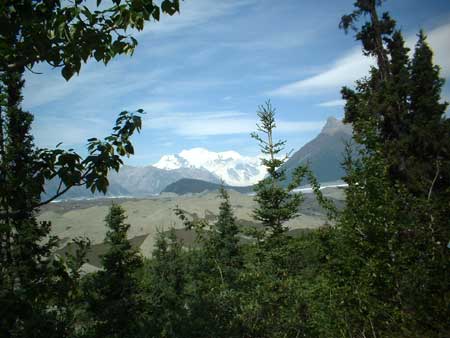
Together, Wrangell-St. Elias National Park and Preserve, Kluane National Park Reserve in the Yukon Territory, Glacier Bay National Park and the Alsek-Tatshenshini Provincial Park in British Columbia are one of the largest internationally-protected areas in the world. And it’s no wonder there’s been an effort to preserve these lands. The country is wild, remote, and magnificent. As Ernest Gruening, Director of U.S. Territories who was later Alaska’s governor and a U.S. Senator, said after a flight over Wrangell St. Elias in 1938:
“the region is superlative in its scenic beauty and measures up fully and beyond the requirements for its establishment as a National Monument and later as a National Park. It is my personal view that from the standpoint of scenic beauty, it is the finest region in Alaska . I have traveled through Switzerland extensively, have flown over the Andes, and am familiar with the Valley of Mexico and with other parts of Alaska. It is my unqualified view that this is the finest scenery that I have ever been privileged to see.”

Kennicott commands a breathtaking view of the Wrangell and Chugach mountains. The Wrangells, rugged, ice-capped volcanic peaks rising above the Copper River plateau, are among the most majestic mountains in Alaska. There are five peaks in the Wrangells over 12,000 feet, with 16,390 foot Mt. Blackburn the dominant peak seen from Kennicott. Bounded by the Gulf of Alaska to the south and the Alaska Range to the north, the Wrangell mountain area is an unspoiled wilderness of great beauty, with mile-deep river canyons, alpine lakes, braided rivers, high tundra meadows and one of the most extensive glacier systems in North America. Dall sheep, mountain goats, grizzly bears, moose and wolves make the Wrangell Mountains home. At the foot of the company town, the Kennicott and Root glaciers end their flow and the broad Chitina Valley sweeps out past McCarthy and beyond. National Creek runs through town to the Kennicott River and then on to the Chitina and Copper Rivers to empty into the Gulf of Alaska at Cordova.
For more on Wrangell St. Elias National Park, check out www.nps.gov/wrst/index.htm.
Return to Seventeen Silk Stocking Row home page.
Copyright © 2015, Seventeen Silk Stocking Row, LLC. All rights reserved